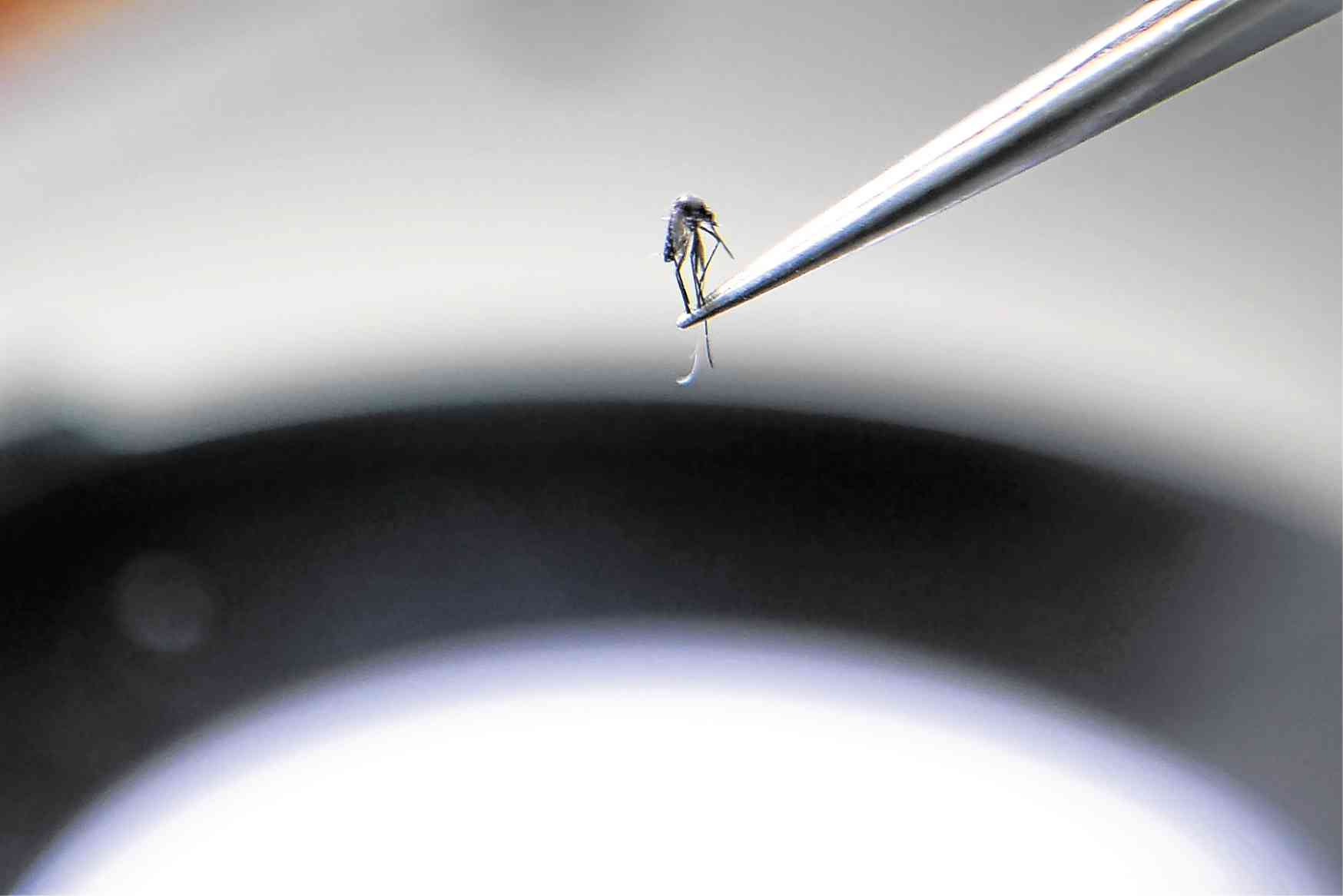Dengue cases hit 250,000; more than 1,000 dead

TINY BUT DEADLY A tweezer holds a mosquito at the Pasteur Institute in the southern Vietnamese city of Nha Trang where research is under way to find a natural method to stop the tiny but deadly insect from spreading the virus, which has caused a surge in dengue cases in Southeast Asia this year. —AFP
MANILA, Philippines — Much is still to be desired from the efforts of local governments to stop the dengue epidemic as the number of cases has risen to nearly 250,000 nationwide with more than 1,000 dead, over a third them children.
Health Undersecretary Rolando Enrique Domingo appealed to local officials on Tuesday to do “a little more” to prevent the spread of the mosquito-borne disease, especially after the total cases breached 240,000, the higher of the year-end estimates of the Department of Health (DOH).
“What we need is [for the effort] to go down to the barangay level. It also needs to be done daily. We understand that sometimes it may be tiring but the threat of dengue is continuous. We ask for a little more effort because as we can see there are still a lot of cases,” Domingo told reporters.
The DOH recommends insecticide fogging in areas where a rise in the number of cases has been recorded for two consecutive weeks.
Cleanliness still key
Article continues after this advertisementDomingo reminded the public that one of the most effective ways to control the spread of the disease is by ensuring cleanliness in communities so that the Aedes aegypti mosquito, which carries the dengue virus, would not be able to breed.
Article continues after this advertisementThe DOH’s Epidemiology Bureau (DOH-EB) reported that as of Aug. 24, there were already 249,332 dengue cases across the country, or a 109-percent increase from last year. It said 1,021 people had died.
From Aug. 18 to 24 alone, the DOH saw 13,192 new cases, which is 60 percent higher than in the same period last year.
DOH data show that the eight-month total dengue cases this year is the highest recorded since 2012. In the last seven years, full-year cases ranged from a little more than 113,000 to more than 220,000.
Peaks during ‘ber’ months
Domingo said this meant that the epidemic wasn’t under control yet and that more cases were to be expected given that the mosquito-borne disease peaks during the “ber” months.
That’s why, Domingo pointed out, health authorities needed more cooperation from local officials.
“If a community is aggressive and active [in fighting dengue], it’s control of the spread of the disease is more efficient,” he said.
Among all regions, Western Visayas still has the most number of dengue cases with 42,694 and 186 deaths. Other regions that reported a high prevalence of dengue were: Calabarzon (35,136 cases, 112 deaths), Northern Mindanao (18,799 cases, 69 deaths), Zamboanga Peninsula (17,529 cases, 93 deaths) and Eastern Visayas (17,107 cases, 52 deaths).
Child fatalities
Children aged 5 to 9 accounted for nearly a quarter of all reported cases and 39 percent of all recorded deaths.
The DOH said dengue afflicted children 4 and under (16 percent of all cases), those aged 10 to 14 (20 percent) and teens 15 to 19 (15 percent).
The Philippines has the highest dengue case fatality rate in Southeast Asia of 0.4 percent.
According to Domingo, parents should suspect dengue if their child has fever accompanied by headache, pain behind the eyes or muscle and joint pain for at least two days.
He said the health department had not received any report that there was a shortage of supplies, including blood and intravenous fluid, due to the epidemic.
To avoid overcrowding, patients should be assessed at designated hydration areas in clinics and hospitals to determine whether they should be confined. Only those with severe dengue are to be hospitalized, Domingo said.